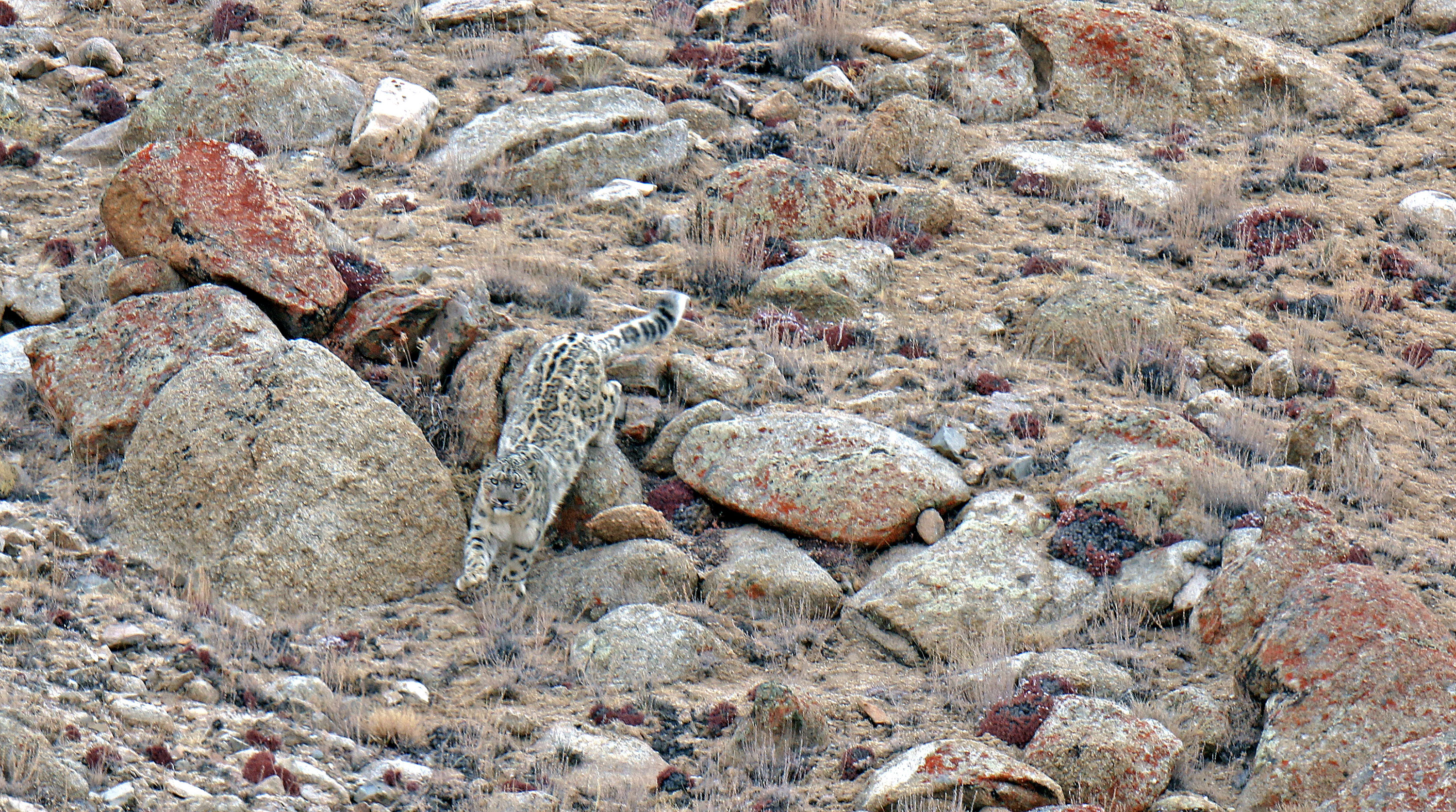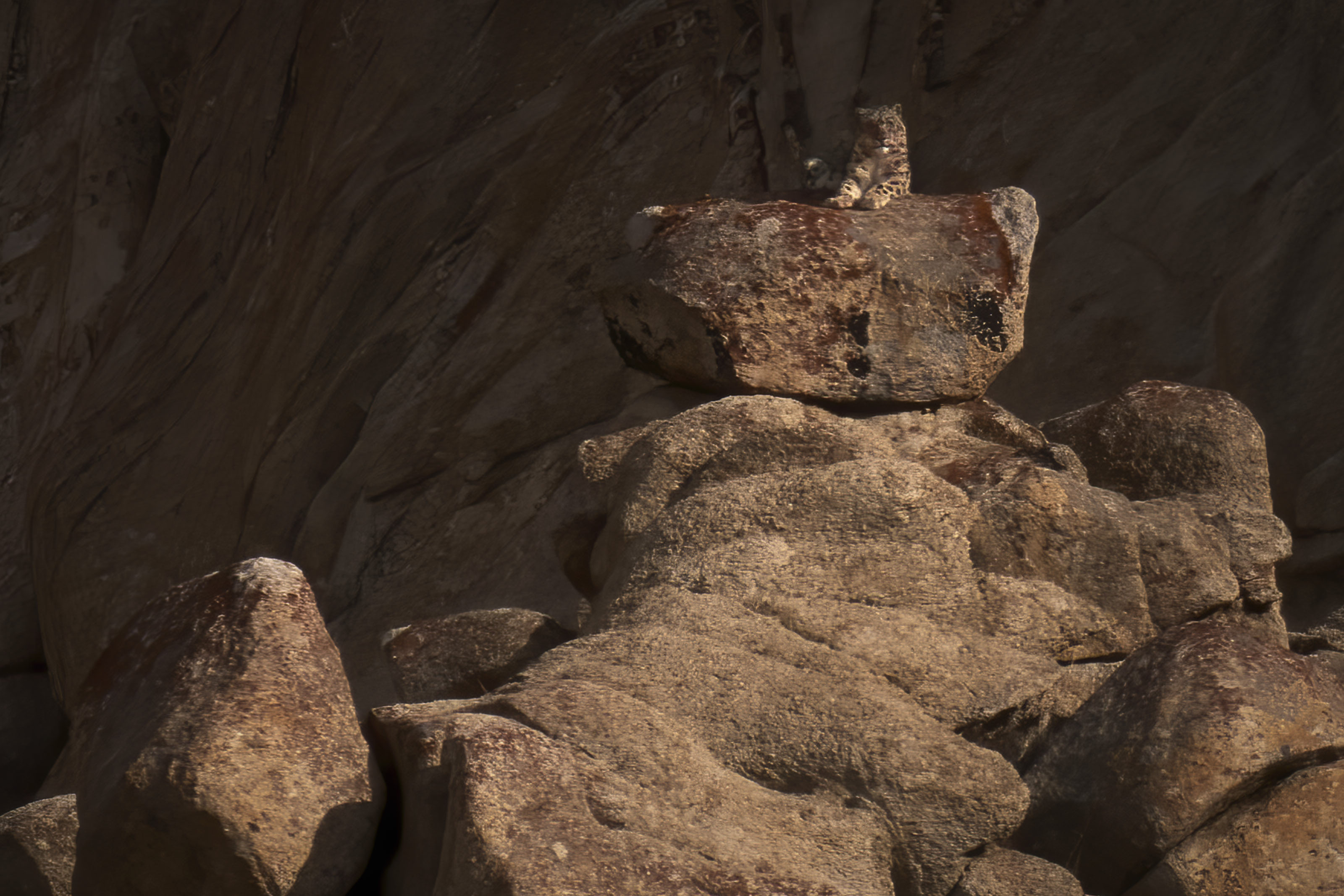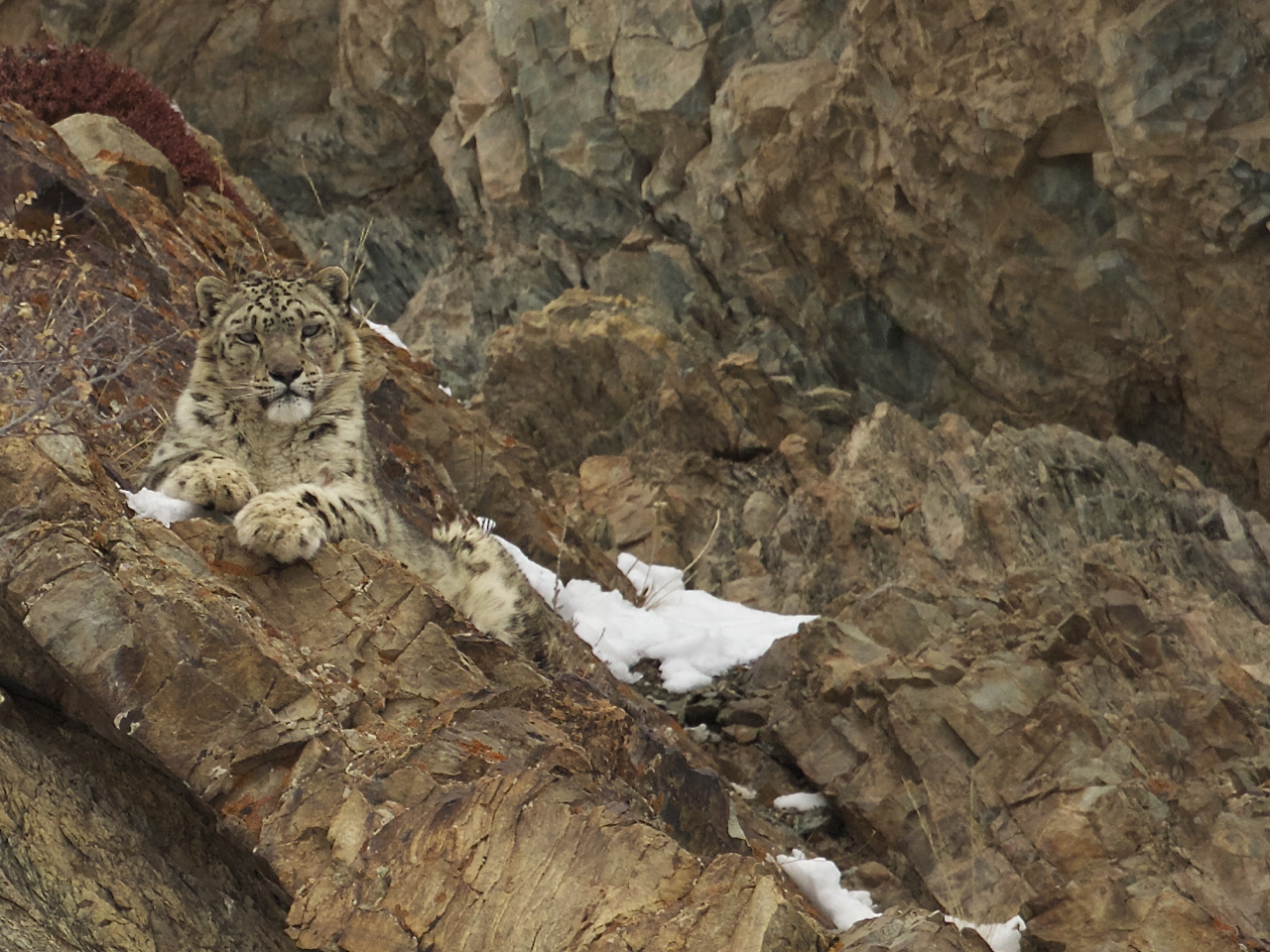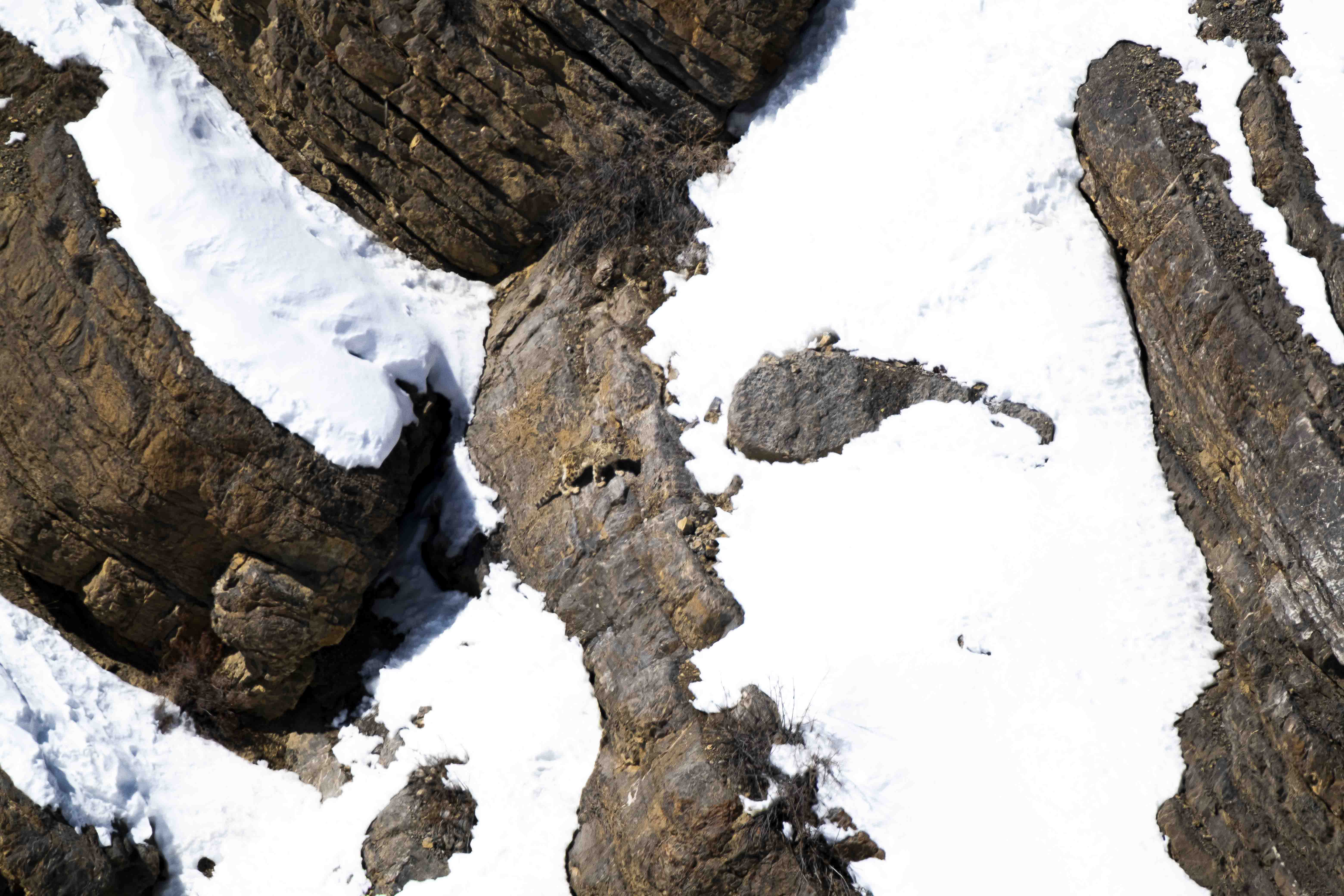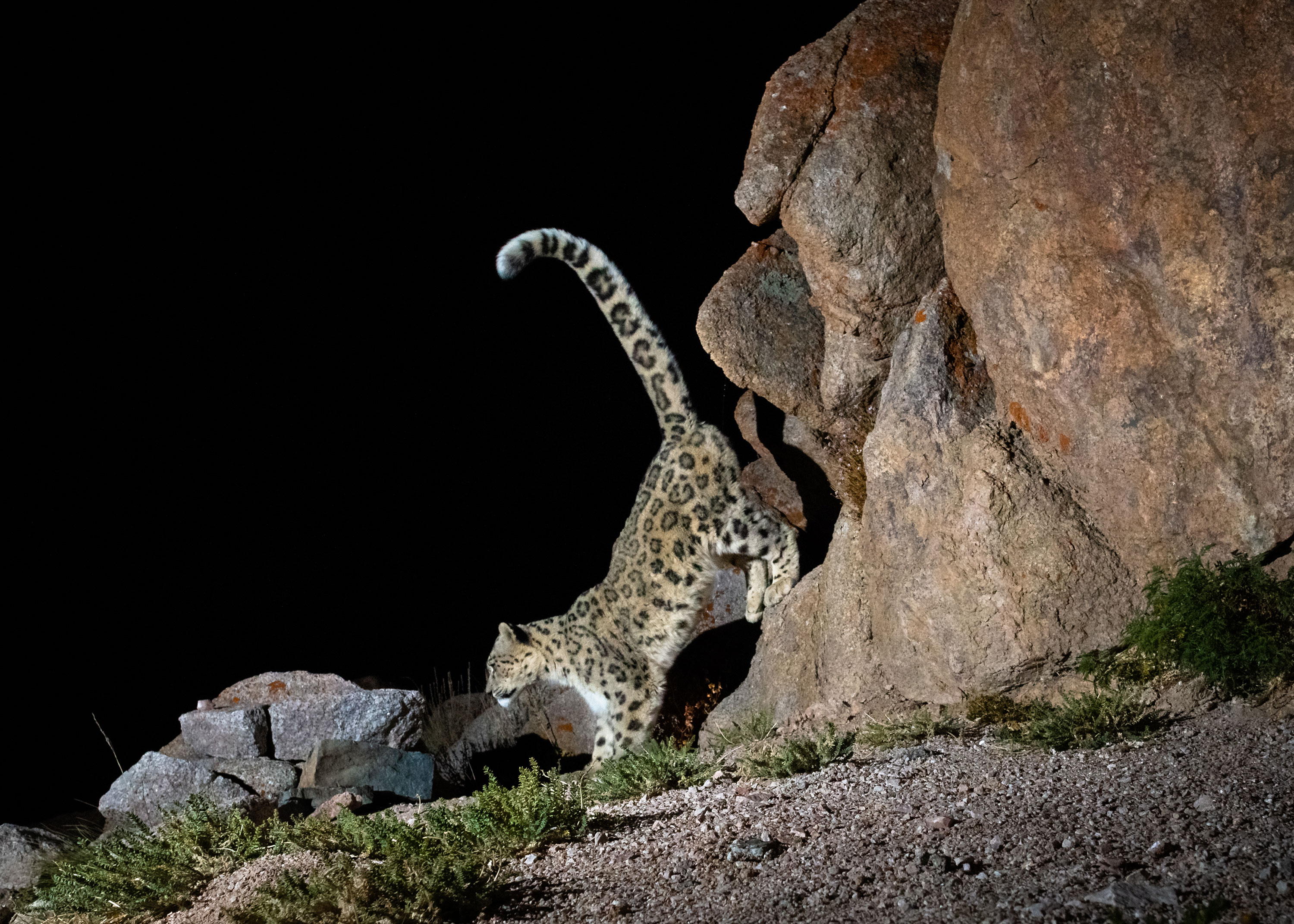When you travel to the Trans-Himalayan region of Ladakh you expect to experience the expanse of cold and arid mountain lands and to see beautiful big mountains with glaciers and torrential rivers – and you do. But we were taken aback by the lack of forage – the food that sustains large herbivores. Everywhere we looked were rocks and boulders and scree and yet, this is a land that supports an intact assemblage of some 20 herbivore species that has survived since the Pleistocene. Among them are, Blue sheep (Psudois nayaur), urial (Ovis vignei vignei), ibex (Capora ibex siberica), argali (Ovis ammon hodgsoni), wild ass (Equus kiang) and the wild yak (Bo grunniens). Added to these are the abundant domestic livestock of yaks, cows, goats, sheep and horses. Lots of herbivores that provide a food source for the enigmatic and beautiful mountain predator – the snow leopard (Panthera uncia) – but an ecosystem resting on poor vegetation. The future of the snow leopard depends on the vegetation and this ecosystem being healthy, and so when we consider the conservation of the snow leopard, we must think about looking after the whole mountain and plateau ecosystem.
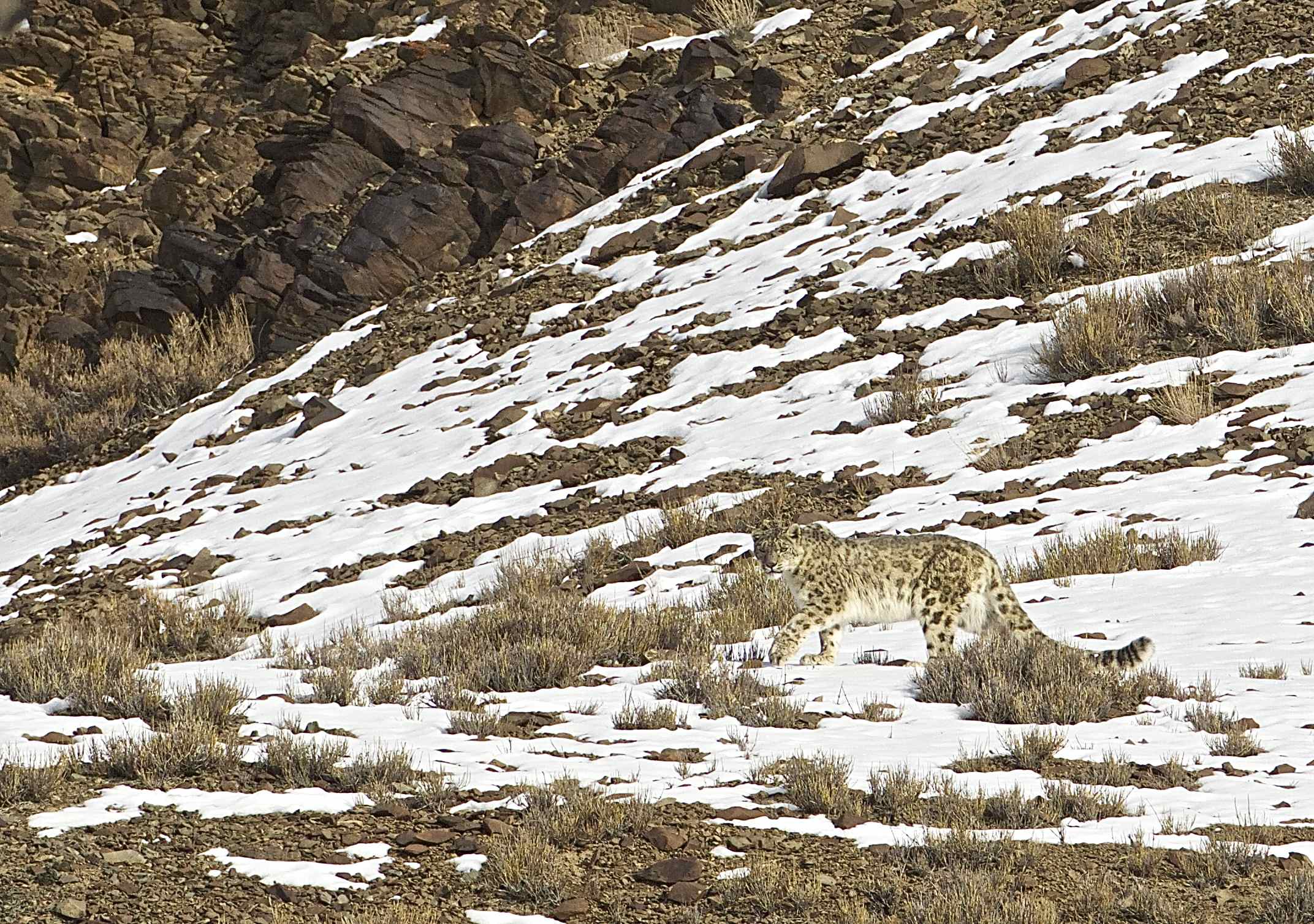
Climate change and the Himalayas
Ladakh on the western side of the Himalayas is arid and so the vegetation and the ecosystem as a whole depends on water run-off that comes from the snow melt. In recent years the snow fall had declined by 50-80% through climate change, so not only is there less vegetation available to the herbivores but the competition is exacerbated. The Tibetan plateau is now 3oC warmer than it was and the water coming from the glaciers is being reduced as they shrink year by year. The tragedies of climate change hit the high mountains and plateaus harder than more tropical areas and are already affecting both the people and the wildlife community. In almost all situations where the competition between domestic and natural herbivores is exacerbated – it’s the free-living species that get pushed out and forced to live at higher altitude where there is less food and this in turn affects the success of the snow leopard.
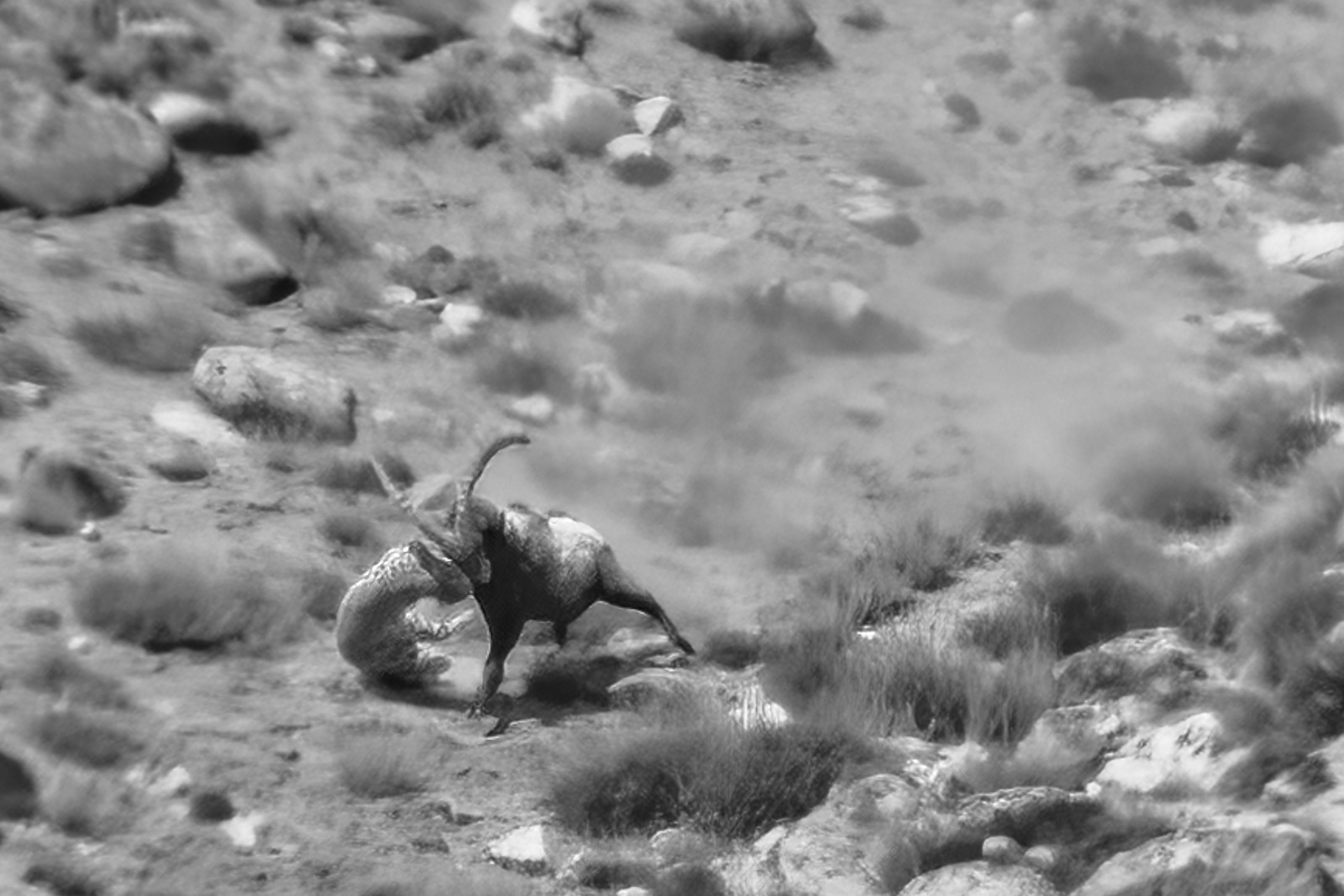
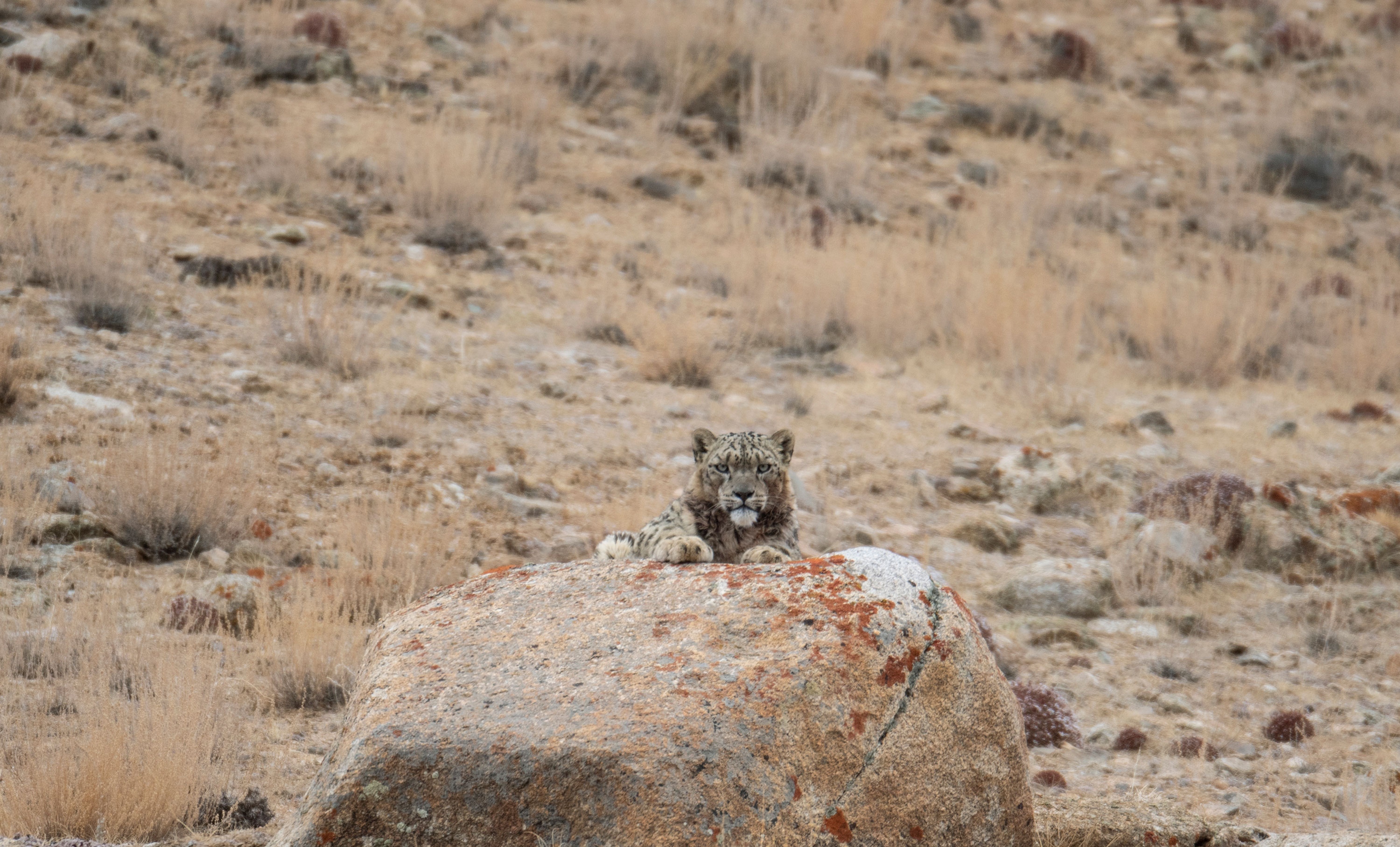
The Grey Ghosts
The snow leopards really are something else – they are the holy grail for cat photographers and simply surviving in this rugged and beautiful landscape is a truly amazing feat for any animal. Not surprisingly these elusive cats have captured the heart of travelers like Peter Mathieson, natural history film makers from the BBC and have even been the focus of some Hollywood films. This is all because the animals are so elusive, Mathieson and the great field biologist George Schaller spent months looking for them and never got a glimpse although in 1971 Schaller did get the first ever photo of a snow leopard in the wild. Over the past 10 years, things have changed and now it is possible for you to fly into Leh, spend a couple of days acclimating to the altitude before being driven off to a remote house or cabin where guides work hard to get you a sighting of the elusive leopard. The cats are so well camouflaged that even when you see one, they can simply melt into the background. In a period of 5 days, most people get to see a cat and sometimes close enough to take a photograph. Indeed, the IUCN lists this as an “amazing species”, and the ideal flagship species for the conservation of the high mountain ecosystem. The irony is that we probably know less about the biology of this species than any other of the big cats.
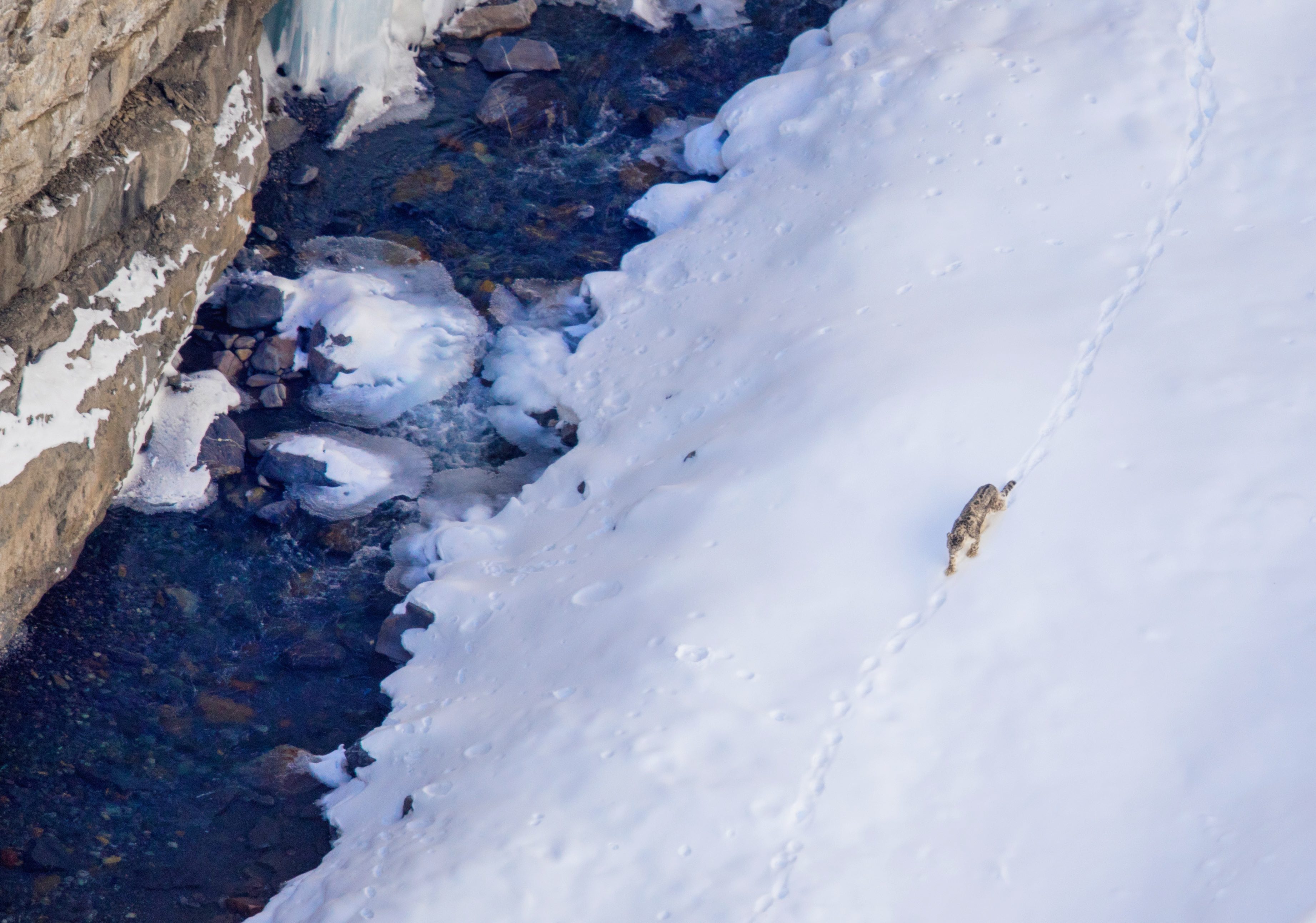
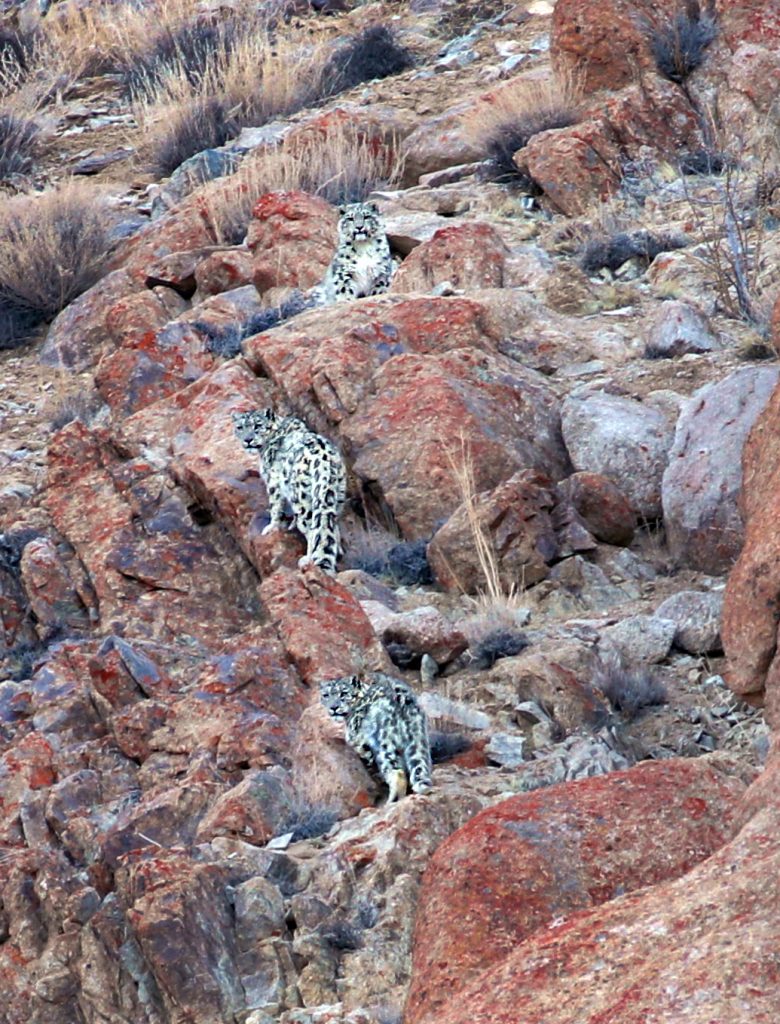
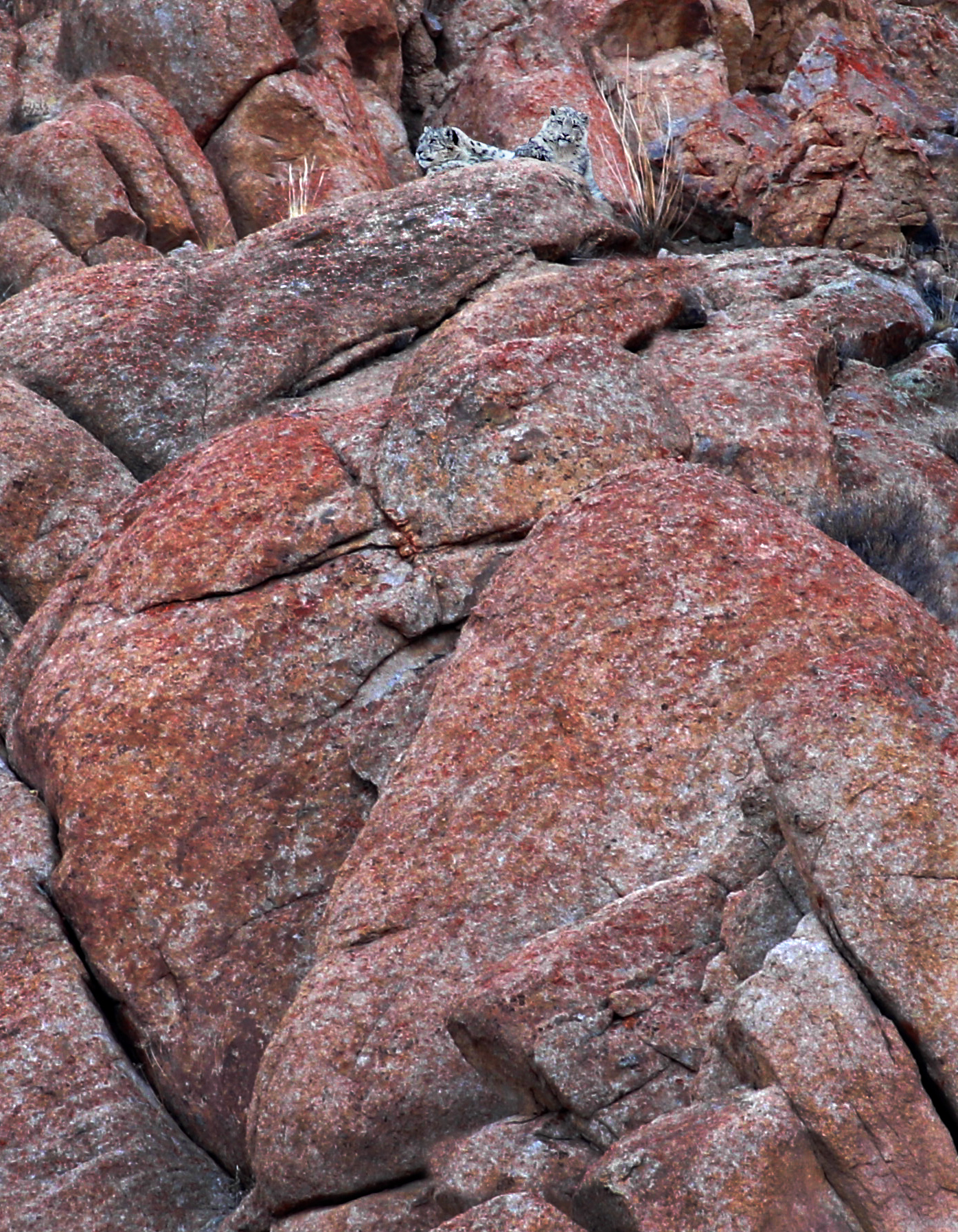
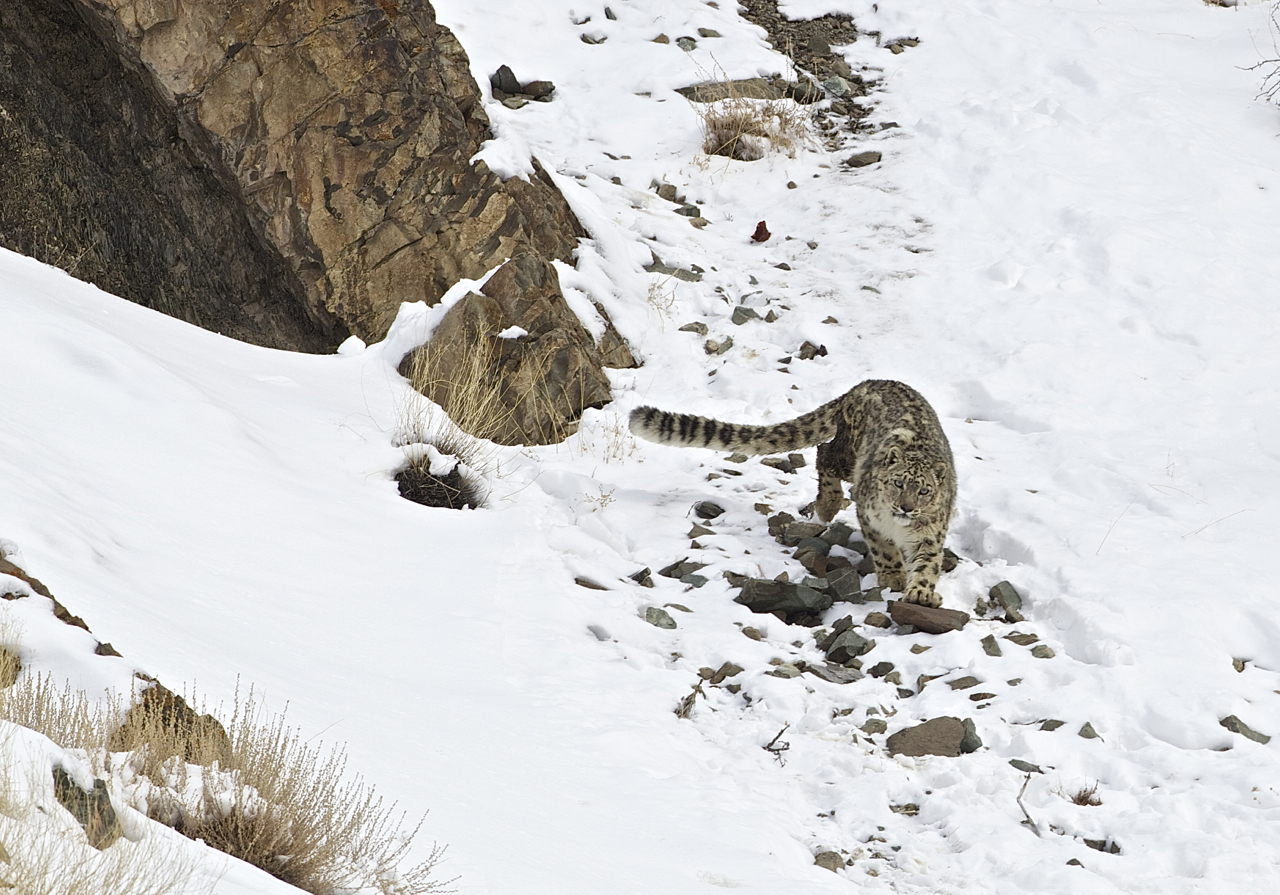
Red Listings and conservation status
In 1986, the snow leopard was listed by the IUCN as Endangered and its status remained like this until 2017, when the species assessment was down-listed to Vulnerable. Currently, the global population of the snow leopard is estimated at about 3,000 adults but the uncertainties in this estimate are large and the population could be twice this. The consensus is that numbers are falling, and the expectation is that these numbers will probably be 10% less over the next 20 years. The good news is that the snow leopard population is not seriously fragmented so leopards can move through suitable habitat, across fairly large distances to find mates. We don’t know much about snow leopard dispersal, but the use of satellite radio collars will help greatly to track the movement of the young dispersing males.
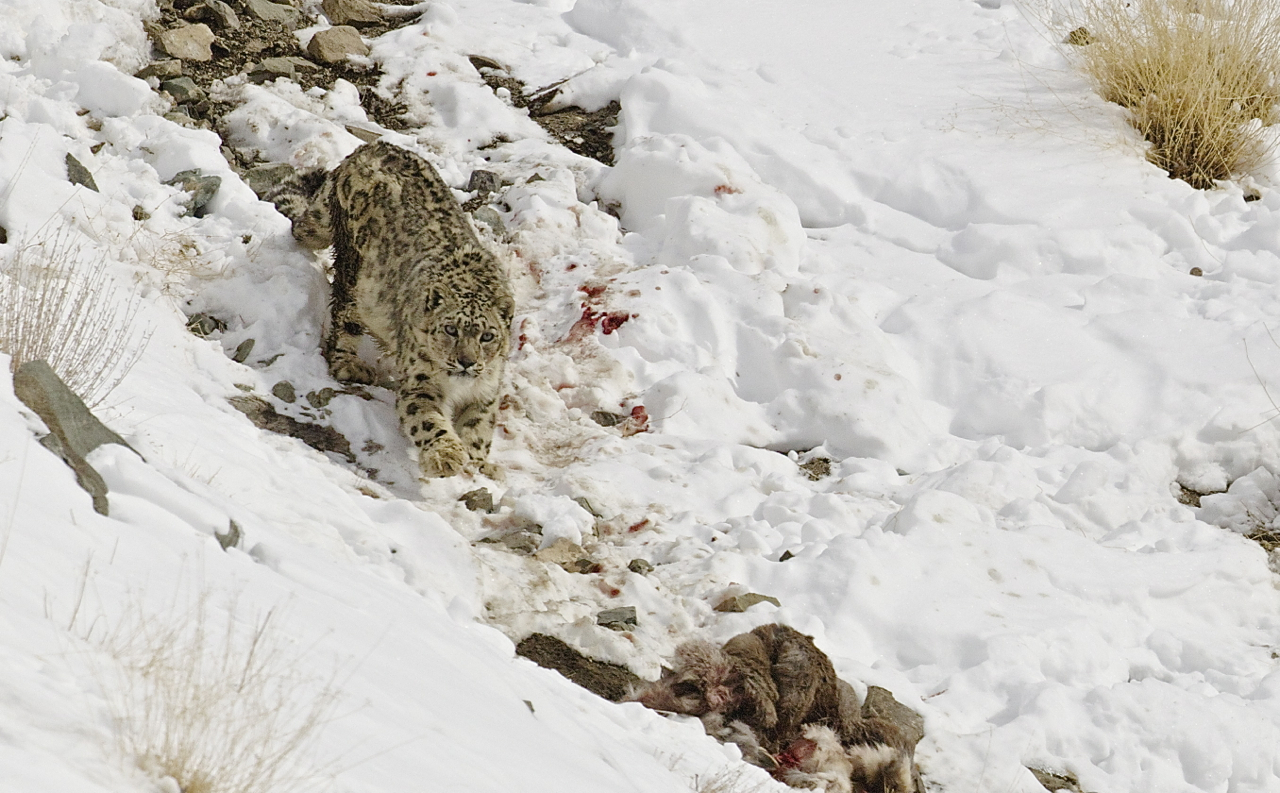
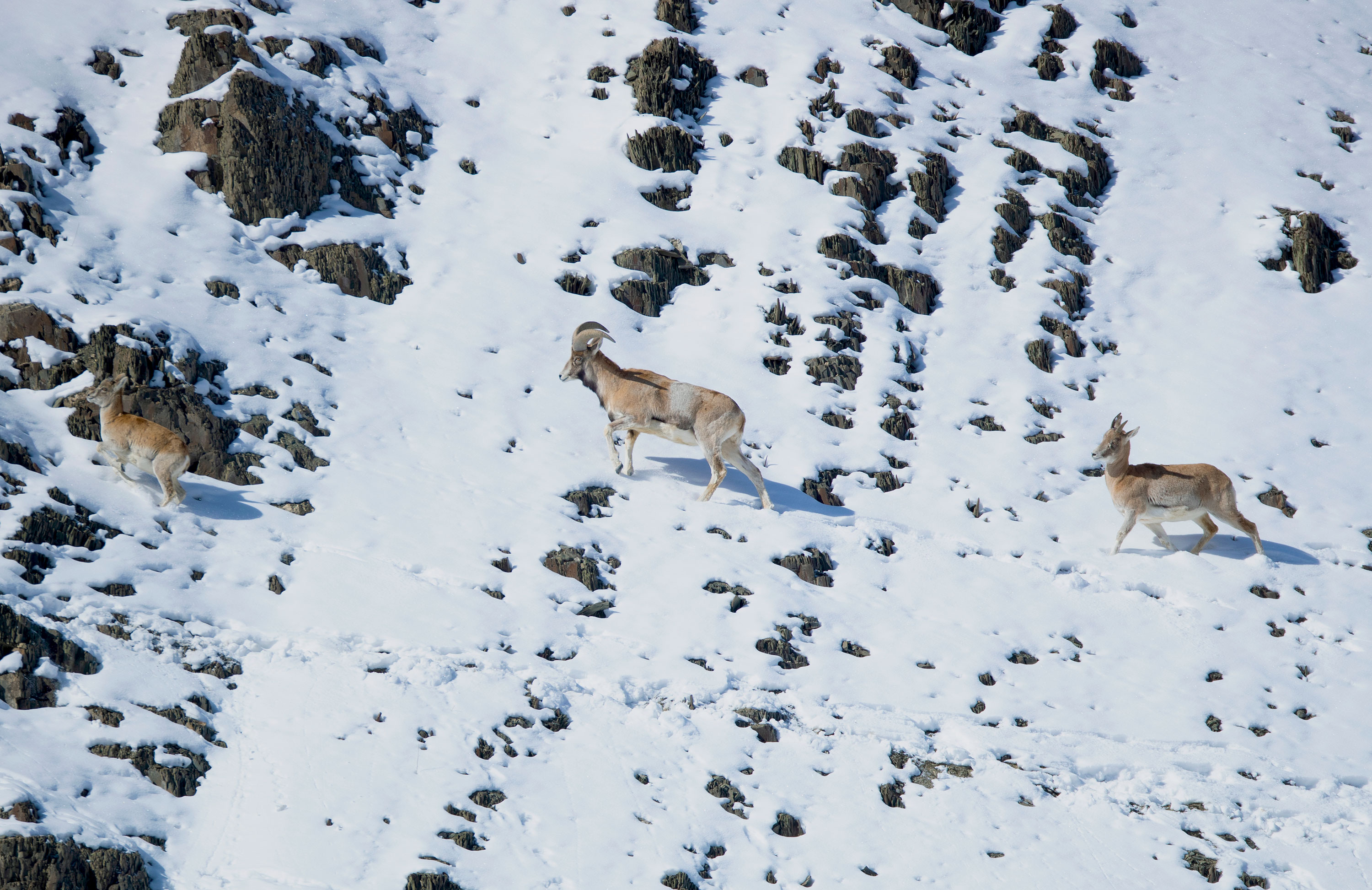
The real issue the IUCN faces in coming with a sensible assessment of the snow leopard population status, is the paucity of data about how many leopards there are in the wild. Abundance is estimated from a conglomeration of data, some is detailed population survey data and other bits include local information about scrapes and scats and the sightings from local people. All this adds uncertainty, and so they must identify some reasonable estimates and proceed with a precautionary and credible approach. They do this by taking the sound data and extrapolating it to other areas, using a series of assumptions until they come up with a sensible range of estimates. The focus is on the lowest bound of abundance and from this, the assessment team, which includes the real experts on the species, then look to see how it fits with the Red Listing definitions. They decided that the 2008 assessment was incorrect, the snow leopard should have been classed as vulnerable. Counter to this, the Snow Leopard Trust say the IUCN are not following their own precautionary guidelines and should not actively down-list the species when abundance estimates come from such a small proportion of the species range and some areas have shown a worrying decline.
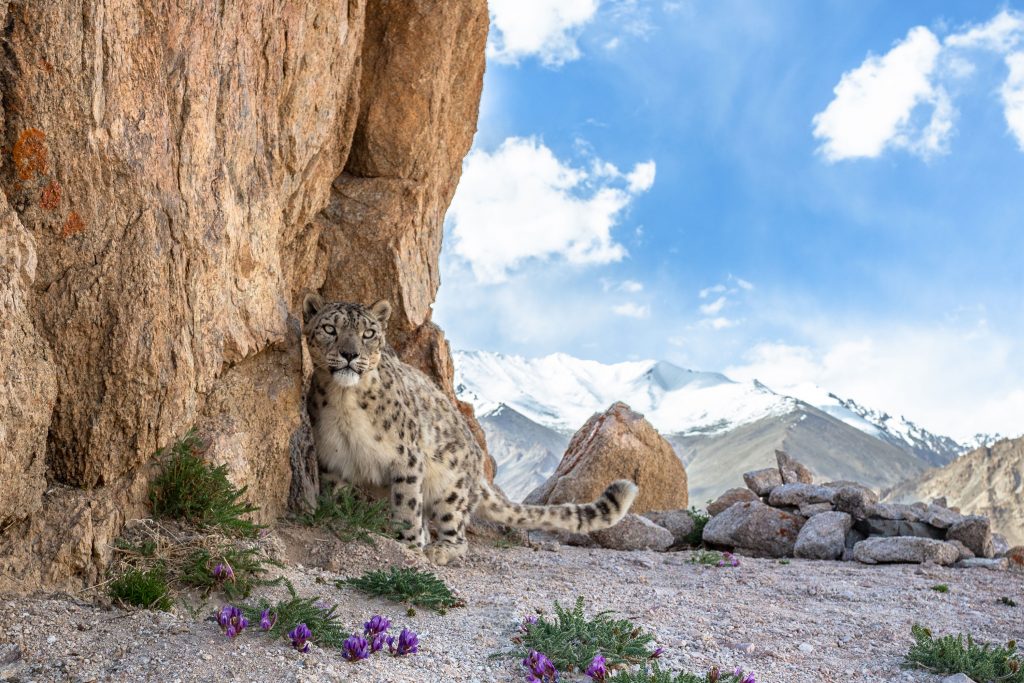
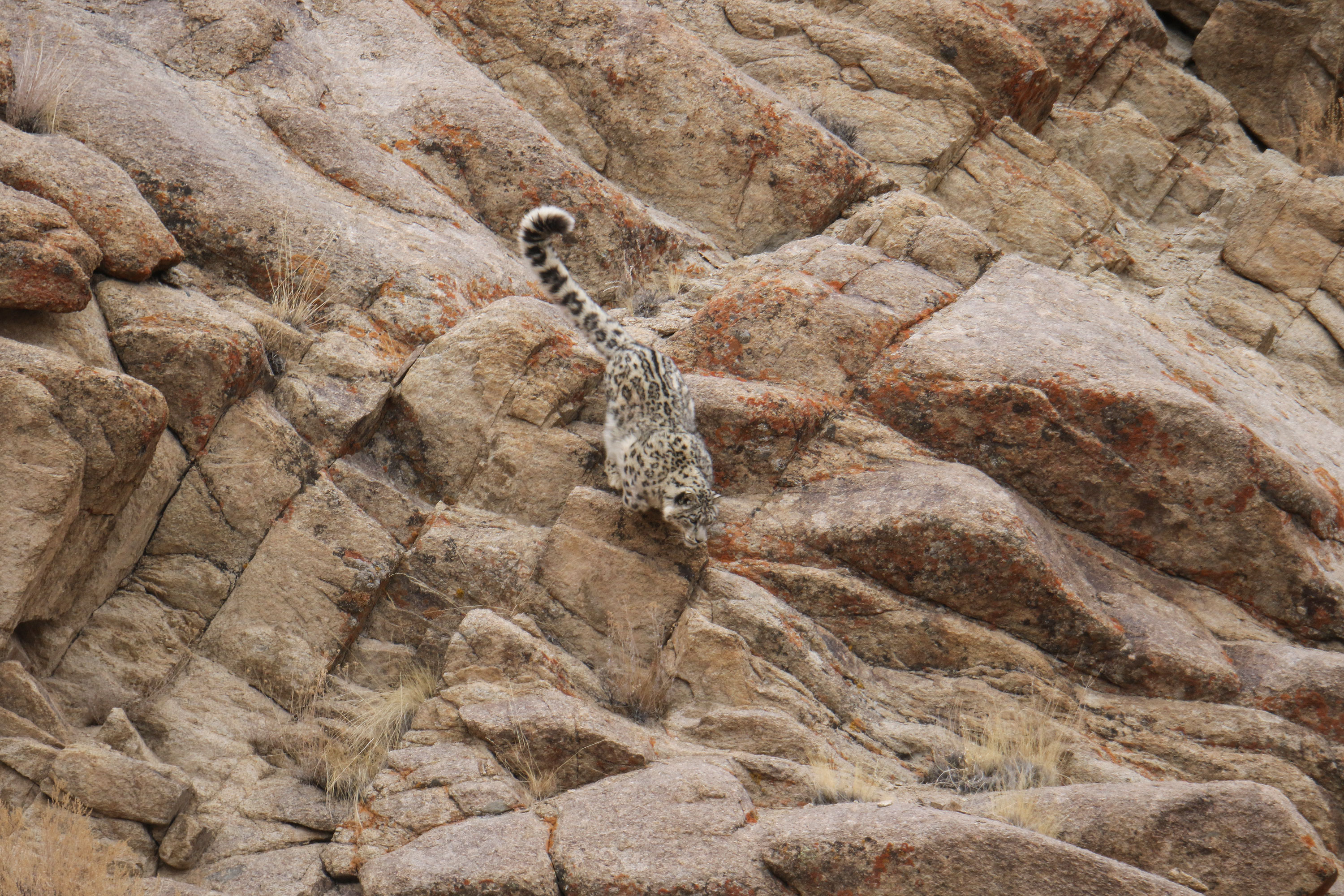
Conflicts with local people
Snow leopards do kill domestic animals like goats, and some of these livestock animals are very valuable since they are a source of special wool like high grade pashminas. As such it is not surprising there is conflict between pastoralists and the snow leopard. The interesting thing is that livestock depredations are highly variable between locations and in areas with high densities of livestock and few wild ungulates, then 58% of the leopard’s diet can be livestock and then this percentage falls when the snow leopards live in areas with less livestock and more ungulates1. Interestingly, in areas where there has been conflict and conservationists have introduced measures to try and reduce the depredations, the local Buddhist communities become more tolerant of the snow leopards. The Snow Leopard Trust and others take a three-pronged approach to handling this conflict2. First, helping to improve responsible and vigilant herding helps and making corals leopard-proof has had great success. Leopards that break into a coral can kill the whole herd of goats in less than an hour and leave the owner with nothing. Offsetting livestock loss with compensation is the second approach that helps, and the clever thing here is that a fixed amount of compensation is given to the local community and then they decide who receives this compensation, as opposed to some bureaucrat in some far-off office. This is clever because the local people know who has been suffering and so prevents cheating. One of the most intriguing and important aspects is appreciating that remote mountainous areas should be looked at as multiple use landscapes and people need income from many different sources including that derived from ecotourists who come to see the snow leopards.
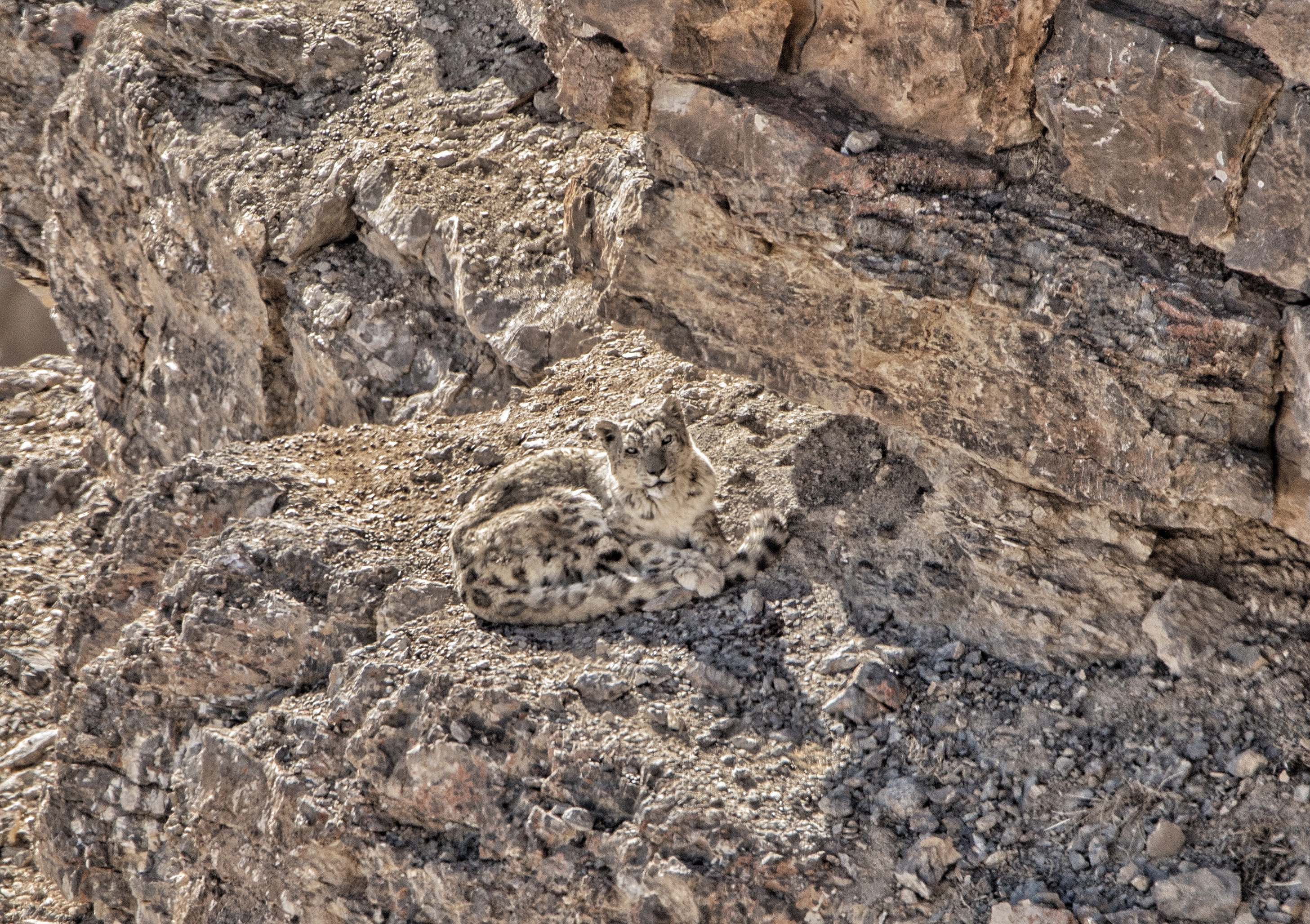
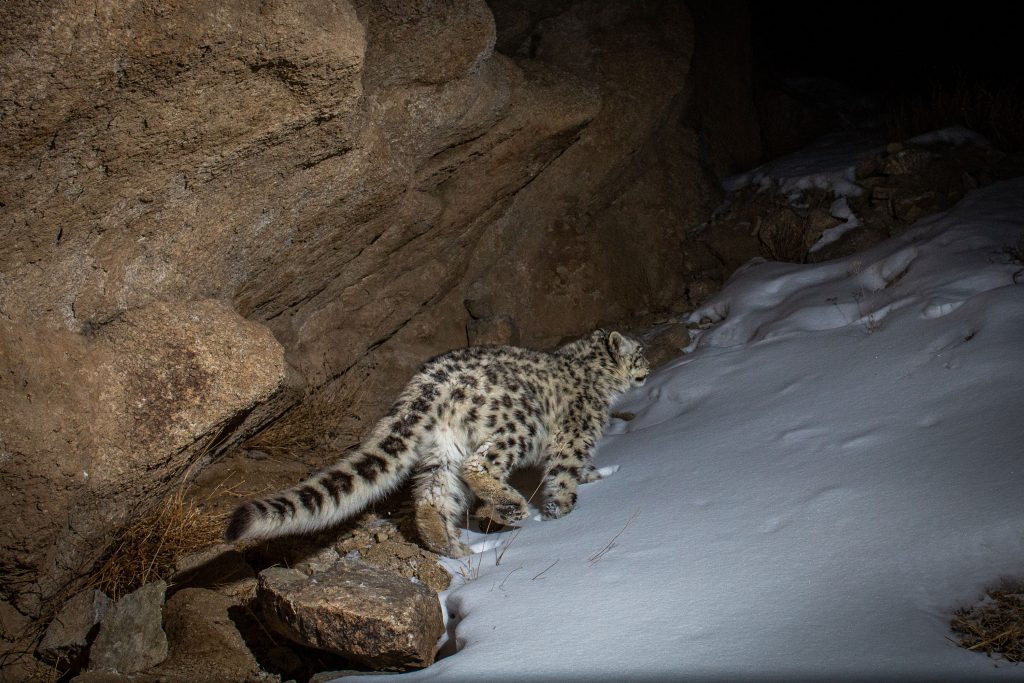
The carpenter and the leopard spotter
We went to photograph leopards and stayed at the remote mountain village of Hemis-shukpachan in Ladakh. We home stayed in an extension of a local farmer’s house where they provided accommodation and support and we spent every daylight hour out in the field looking for leopards with a remarkable man called Morup Tsewang. He spots more leopards than everyone else in this part of Ladakh. During the summer he is a carpenter and spends most of his time building houses for people, but once the weather starts to close in, and it becomes difficult for him to undertake his normal work, then he takes paying tourists out to find snow leopards. This income from snow leopard spotting has allowed him to build his own house and send all three of his children, including 2 daughters to higher education in Leh. In a similar way, multiple people in the villages gain from the ecotourists and more money is flowing into the communities for education and health. We travelled with two local wildlife film makers from Ladakh, Gulzar Hussain and Mohd Imran– the owners of Frozen Himalayas. These guys are filming the leopards and working with the local nomads to provide educational resources for the young including special training of traditional activities. Incredible photographers and really engaged in a generous way with the local people – what ecotourism is all about.
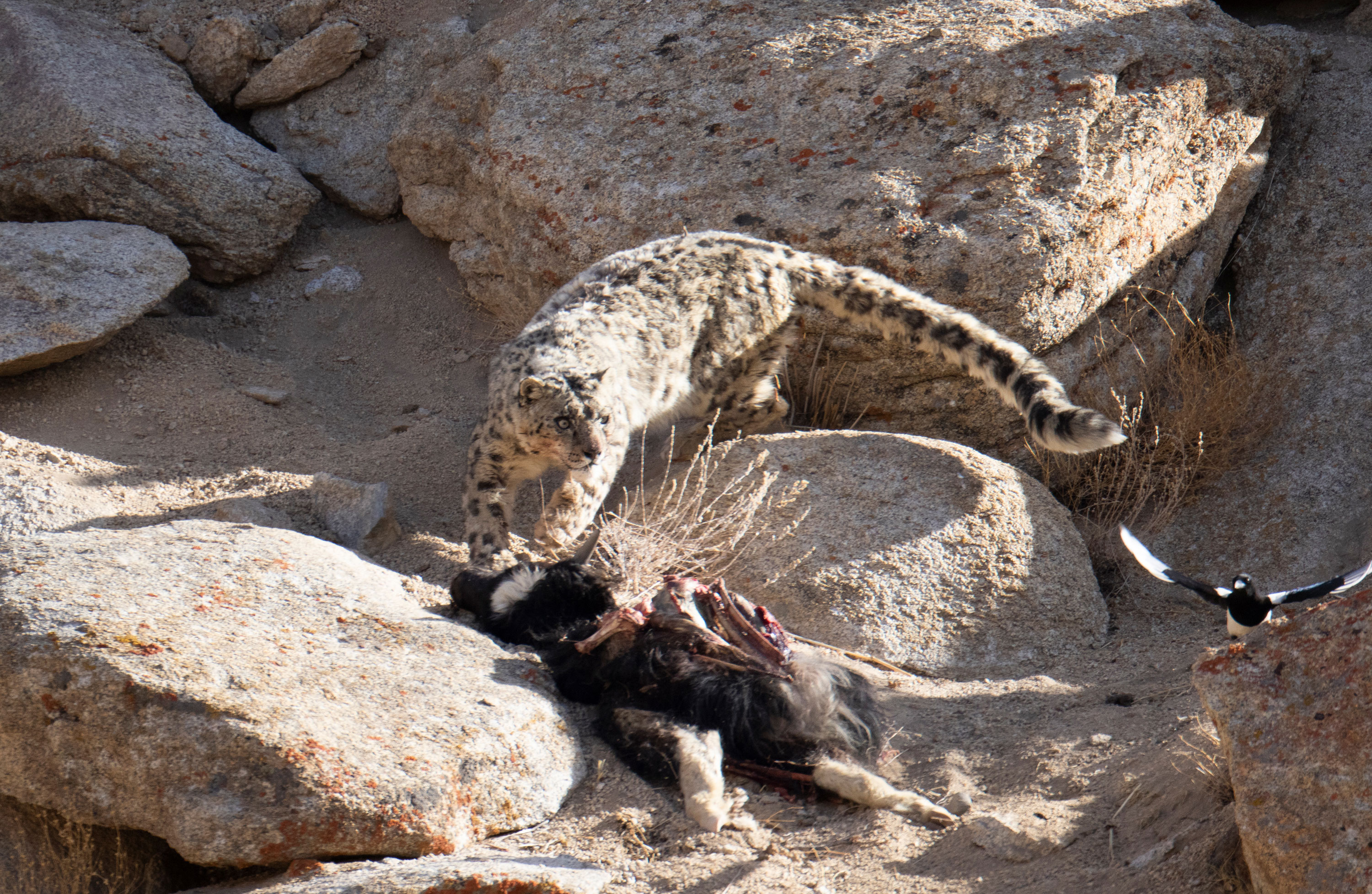
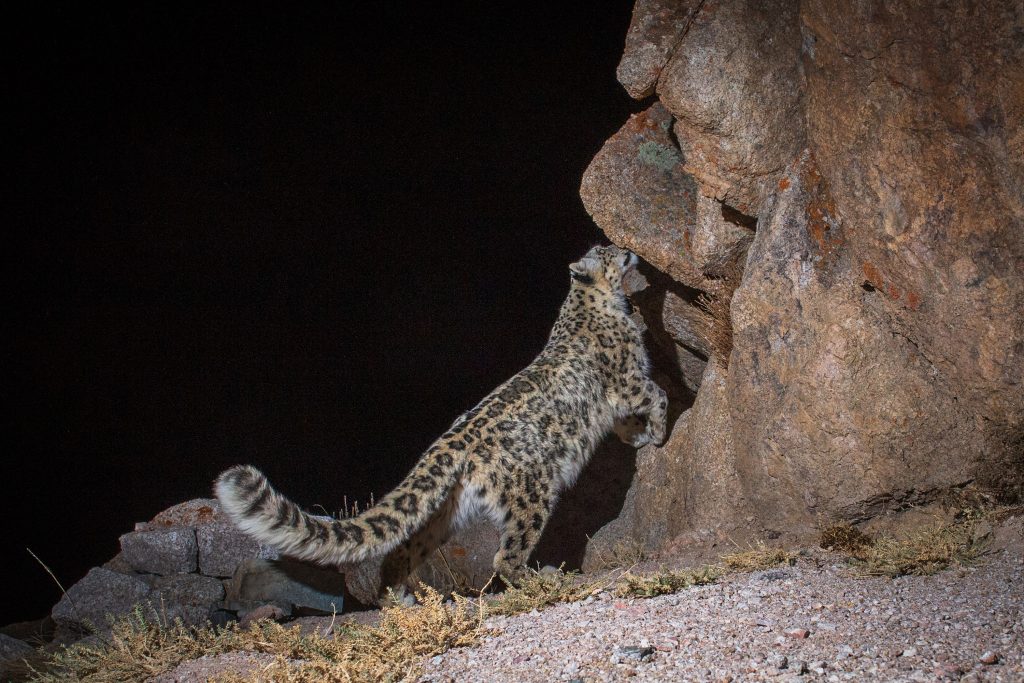
The rising threats
Mining and disturbance from roads and the military is an increasing issue for the snow leopards. Just this week Chinese military invaded the Galwan valley of India and killed 20 Indian troops with clubs and bludgeons and history tells us that wildlife never does well in war torn areas. Naturally the Indian army has a significant presence in this region, and they encourage the local feral dog population to live close to their camps and act as sentinels. To encourage these feral dogs, they provide food and unfortunately the dogs have multiplied and take to the hills to chase the local ungulates. Indeed, while we were in one valley, we heard of a snow leopard kill and rushed to see if we could get a photograph, only to discover the local dog pack had chased the leopard off and were devouring the dead animal. In most parts of the world a solution to feral dogs and cats is to shoot them but this is not an agreeable form of action to the Buddhist community and we need to find a good alternative.
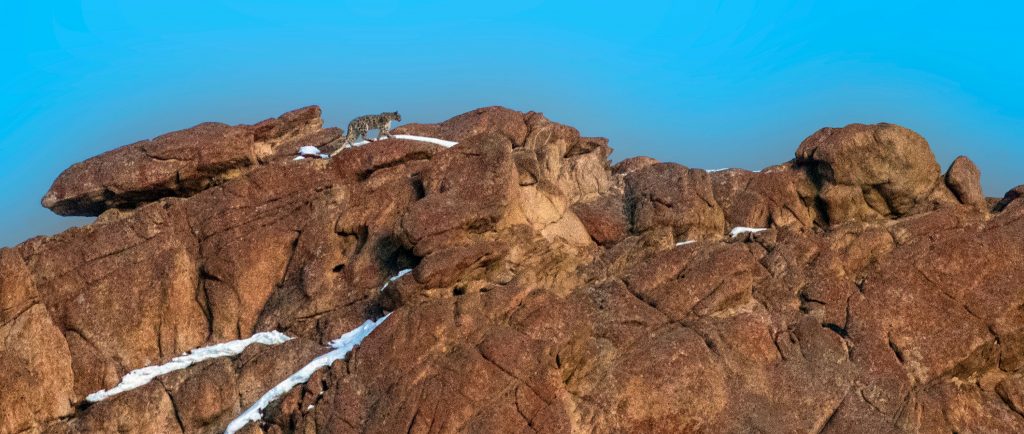
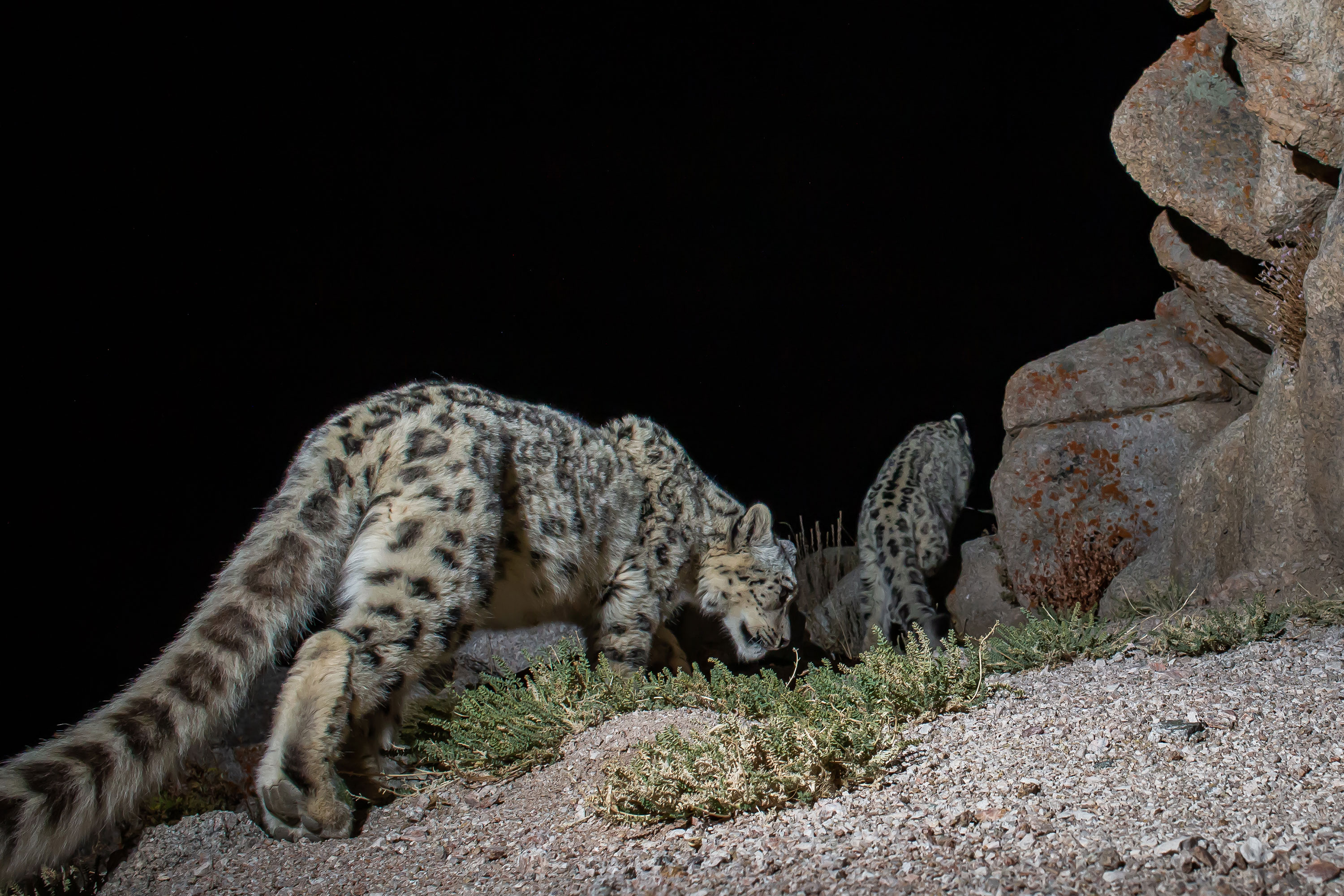
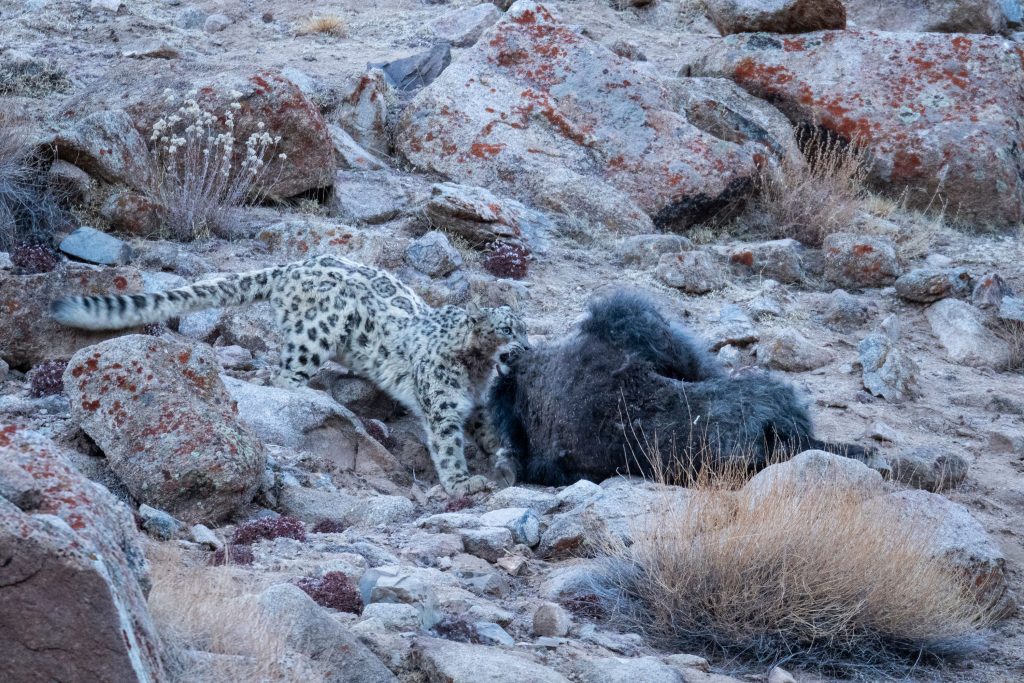
Final word
We leave the final words to our good friend and companion Gulzar Hussain who tells of a pastoralist, who had lost many goats to a snow leopard, and he assumed he would express anger at the leopard. Instead the man pondered and said he did not want to see the leopard go because “The mountains would be quiet without the snow leopards” – a wonderful sentiment that will help conserve this charismatic cat.
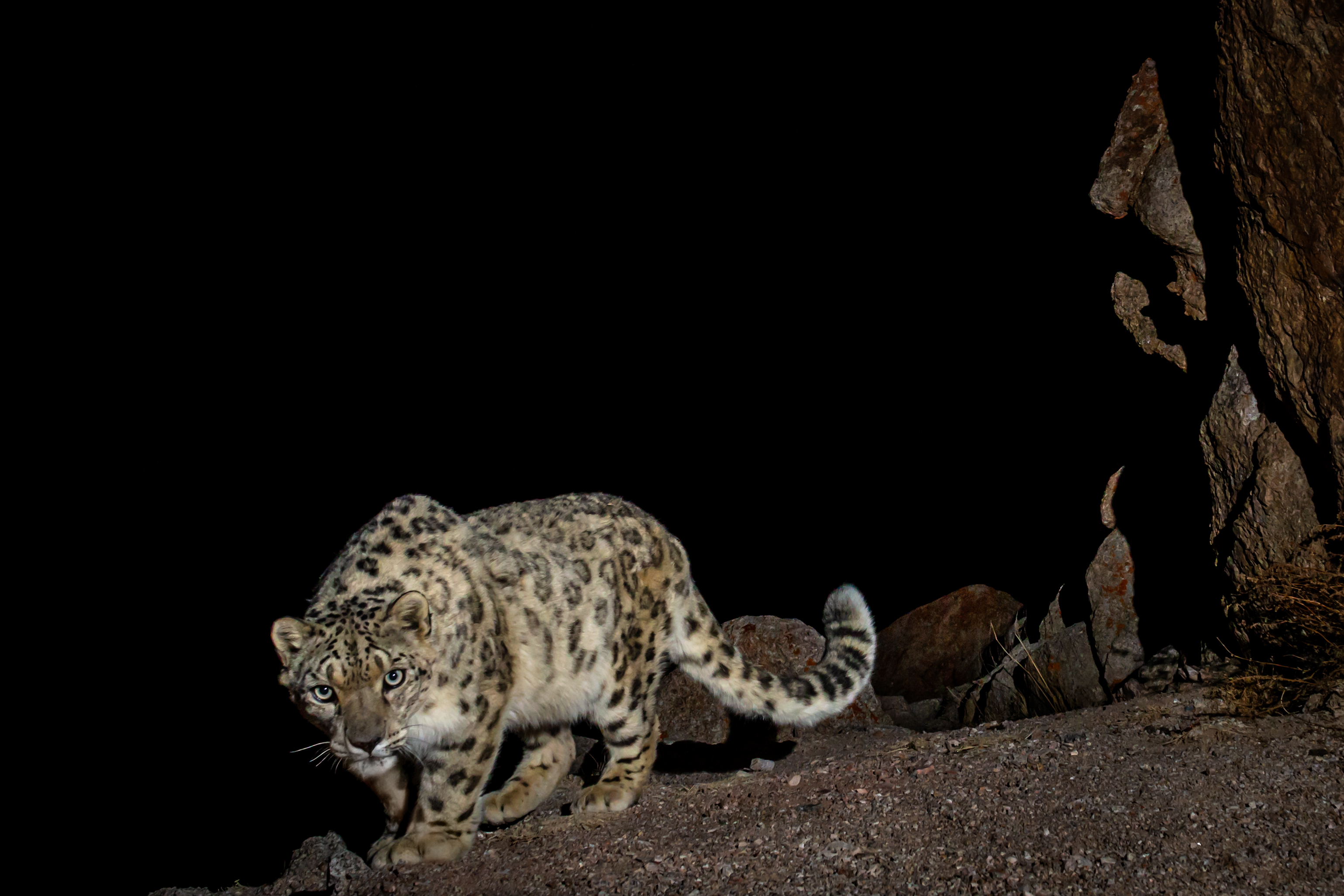
References
1. S. Bagchi1 & C Mishra. 2006. Living with large carnivores: predation on livestock by the snow leopard (Uncia uncia). Journal of Zoology 268 (2006) 217–224
2. McCarthy T. & Mallon, D. 2016. The Snow Leopard. Academic Press
